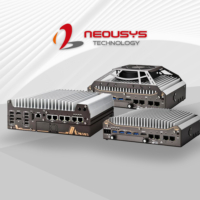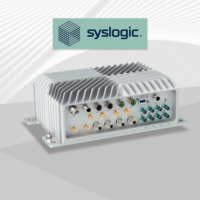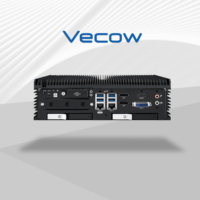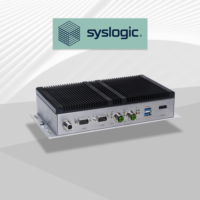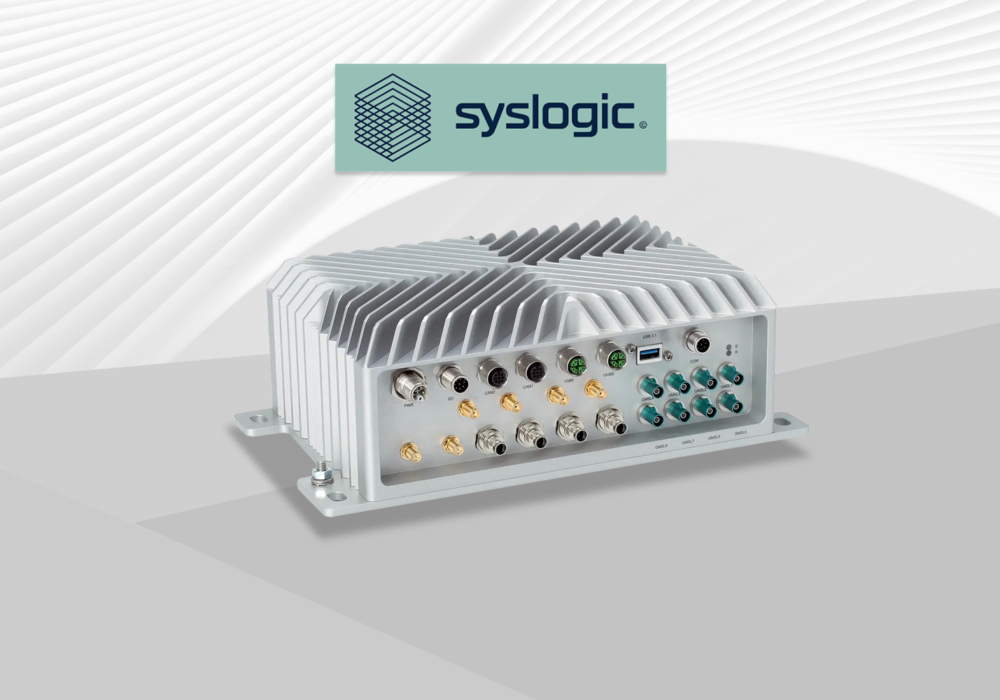In this article:
- Introduction
- What is EN 50155 EMC Standard?
- What is E-Mark Certification?
- Importance of EN 50155 and E-Mark Certification
- Example Scenarios
- The Certification Process
- Conclusion
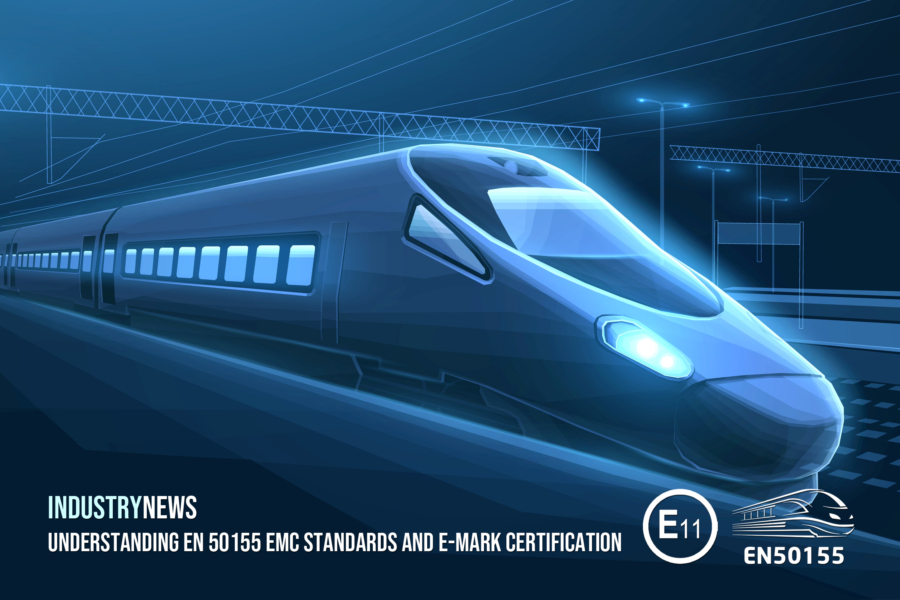
Introduction
As transportation systems evolve, the demand for reliable, safe, and compliant electronic equipment in vehicles has grown significantly. Whether in railways or road transport, the devices installed must meet rigorous standards to ensure they operate effectively in challenging environments. Two critical certifications in this field are the EN 50155 standard and the E-Mark certification. This article provides a detailed overview of these standards, their importance, and examples of scenarios where they are applied.
What is EN 50155 EMC Standard?
EN 50155 is a European standard that outlines the requirements for electronic equipment used in rolling stock (railway vehicles). The standard is widely recognised and respected in the railway industry, serving as a benchmark for quality, reliability, and safety.
Key Aspects of EN 50155
Electromagnetic Compatibility (EMC): EN 50155 includes stringent requirements for electromagnetic compatibility, ensuring that electronic devices do not interfere with each other and can withstand external electromagnetic interference. This is crucial in the railway environment, where numerous electronic systems operate simultaneously.
Temperature Range: Equipment must operate effectively across a wide temperature range, typically from -40°C to 85°C. This ensures that the devices function reliably in various environmental conditions, from extreme cold to intense heat.
Vibration and Shock Resistance: Railway vehicles are subject to constant vibration and occasional shocks. EN 50155 mandates that equipment is tested for durability to withstand these conditions, ensuring long-term reliability.
Humidity and Dust Protection: EN 50155 also addresses the need for protection against humidity and dust, common in railway environments. Equipment must be resistant to these elements to prevent malfunctions and ensure longevity.
Power Supply Variations: Railway systems often experience fluctuations in power supply. EN 50155 requires that electronic equipment can handle such variations without performance degradation, preventing potential failures in critical systems.
What is E-Mark Certification?
E-Mark certification is a European regulatory mark for vehicles and vehicle components, indicating compliance with safety and environmental standards within the European Union (EU). It is mandatory for any automotive product sold in the EU, covering a wide range of components, including lighting, mirrors, tyres, and electronic devices.
In relation to in-vehicle computers E-Mark certification allows trade internationally with ease, as it is recognised not only within the European Union but also in non-EU UNECE members and several other territories globally.
These non-EU UNECE members include countries like Norway, Russia, Ukraine, Croatia, Serbia, Belarus, Kazakhstan, Turkey, Azerbaijan, and Tunisia. Additionally, territories such as South Africa, Australia, New Zealand, Japan, South Korea, Thailand, and Malaysia also adhere to E-Mark certification guidelines.
This wide acceptance means that manufacturers of automotive computers with E-Mark certification can sell their products in these countries without facing regulatory hurdles or the need for additional local certifications.
Key Aspects of E-Mark Certification
Safety Compliance: E-Mark certification ensures that automotive components meet specific safety requirements. This is crucial for protecting passengers, drivers, and pedestrians.
Environmental Compliance: The certification also includes regulations on emissions, noise, and other environmental factors. This is particularly important in reducing the environmental impact of vehicles.
Regulatory Recognition: Products with E-Mark certification are recognised across all EU member states, simplifying the process for manufacturers to sell their products within the European market.
Testing and Approval: To obtain E-Mark certification, products must undergo rigorous testing by approved bodies. These tests cover various aspects, including durability, performance, and compliance with EU regulations.
The Significance of the Number in E-Mark Certification
One distinctive feature of the E-Mark certification is the inclusion of a number next to the “E” symbol. This number is not arbitrary; it holds specific significance and provides valuable information about the certification.
Country of Approval
The number next to the “E” indicates the country that approved the certification, which aligns with the 1958 Agreement under the United Nations Economic Commission for Europe (UNECE). Each participating country is assigned a unique number, which is used to identify where the product was tested and approved for compliance with ECE regulations. For example:
- E1 represents Germany
- E2 represents France
- E3 represents Italy
- E4 represents the Netherlands
There are many more such numbers corresponding to other countries.
Why the Number Matters
The number is essential because it provides transparency and traceability. It allows regulators, manufacturers, and consumers to quickly determine the origin of the certification. This is particularly important in the context of international trade, where different countries may have varying levels of strictness in their testing and approval processes.
For manufacturers, the number helps ensure that their products meet the specific regulatory requirements of different countries within the European Union and other regions recognising the ECE regulations. For instance, if a product is marked with “E1,” it signifies that it meets the standards as tested and approved in Germany, known for its stringent automotive regulations.
In summary, the number in the E-Mark certification is a key element that denotes the country of origin for the testing and approval process, ensuring that products adhere to the relevant standards and regulations of that country.
Manufacturers who obtain E-Mark certification for their automotive computers demonstrate a commitment to quality and consistency. Holding E-Mark certification requires continuous compliance with the standards, ensuring that every unit of the automotive computer meets the certified specifications. The rigorous testing process guarantees that the product fulfills all essential requirements, building trust with consumers and business partners alike. Furthermore, should a quality issue arise, E-Mark certification facilitates easier identification and recall of specific batches of automotive computers. The unique identification numbers associated with the certification are crucial for tracking products, enabling efficient quality control and quick resolution of any issues.
Importance of EN 50155 and E-Mark Certification
Both EN 50155 and E-Mark certification play vital roles in ensuring the reliability, safety, and compliance of electronic equipment in transportation systems.
EN 50155 in Railway Systems
In railway applications, the EN 50155 standard is crucial for several reasons:
Safety: By ensuring that electronic equipment meets EMC standards, the risk of malfunctions and accidents is significantly reduced. For example, a failure in the train control system due to electromagnetic interference could lead to catastrophic consequences.
Reliability: EN 50155 guarantees that equipment can withstand harsh conditions, such as extreme temperatures and constant vibration, ensuring uninterrupted service and reducing maintenance costs.
Global Acceptance: As a widely recognised standard, EN 50155 compliance is often required for international projects, making it easier for manufacturers to enter global markets.
E-Mark Certification in Automotive Industry
E-Mark certification is equally critical in the automotive industry:
Regulatory Compliance: Meeting E-Mark certification requirements ensures that automotive components comply with EU regulations, avoiding potential legal issues and penalties.
Market Access: E-Mark certification is a prerequisite for selling automotive products within the EU, making it essential for manufacturers targeting the European market.
Consumer Confidence: Products with E-Mark certification are perceived as safer and more reliable, increasing consumer trust and brand reputation.
Example Scenarios
To better understand the application and importance of EN 50155 and E-Mark certification, let’s explore some example scenarios.
Scenario 1: E-Mark Certification for In-Vehicle Computers
Scenario: A European automotive manufacturer is developing a new in-vehicle computer designed to manage advanced driver assistance systems (ADAS) in cars. The company plans to market and sell this computer across various countries, including EU nations and other UNECE member states like Japan, South Korea, and Australia.
E-Mark Certification Process: To ensure the computer can be legally sold in these markets without encountering regulatory barriers, the manufacturer seeks E-Mark certification. This process involves rigorous testing of the computer’s electromagnetic compatibility (EMC), ensuring it does not interfere with the vehicle’s electronics or other devices. Additionally, the computer must meet environmental compliance standards related to safety, emissions, and other regulatory criteria.
Outcome: After successfully obtaining the E-Mark certification, marked as E11 (for the UK, if testing was conducted there), the manufacturer can confidently distribute the in-vehicle computer across all EU countries and other territories recognising the E-Mark. The certification not only simplifies the approval process but also instills confidence in consumers, knowing that the product meets high-quality and safety standards. This allows the company to enter new markets quickly and efficiently, avoiding the need for multiple certifications or modifications to meet different countries’ standards.
Scenario 2: EN 50155 Certification for Railway Computers
Scenario: A technology company is developing a rugged computer system intended for use in railway control and monitoring applications. This system will be installed in trains to manage onboard communication, passenger information systems, and real-time diagnostics.
EN 50155 Certification Process: Since the railway environment is subject to extreme conditions, including temperature variations, vibrations, and electrical interference, the computer must be certified according to the EN 50155 standard. This involves testing for EMC, temperature resilience, shock and vibration resistance, and power supply stability. The computer is also evaluated for its ability to operate reliably under harsh conditions typically encountered in railway environments.
Outcome: After achieving EN 50155 certification, the company’s computer system is recognized as meeting the stringent requirements necessary for railway applications. The certification ensures that the computer can function safely and reliably across various rail networks, minimizing the risk of malfunctions that could disrupt train operations. With this certification, the company can market the computer to railway operators across Europe and other regions that adhere to EN 50155 standards, broadening its market reach and establishing its product as a trusted solution in the industry.
Scenario 3: EN 50155 in Train Control Systems
Context: A company is developing a new train control system for a high-speed rail network. The system includes multiple electronic components, such as sensors, communication modules, and processing units.
Challenge: The train control system must operate reliably in various conditions, including extreme temperatures, high levels of vibration, and potential electromagnetic interference from other onboard systems.
Solution: The company designs the system according to EN 50155 standards, ensuring that each component meets the required specifications for temperature range, vibration resistance, and EMC. The system undergoes rigorous testing, including temperature cycling tests, vibration tests, and EMC tests, to ensure compliance.
Outcome: The train control system is certified as EN 50155 compliant, giving the railway operator confidence in its reliability and safety. The system is deployed across the high-speed rail network, operating effectively in all conditions and contributing to the overall safety and efficiency of the railway system.
Scenario 4: E-Mark Certification for In-Vehicle Infotainment System
Context: An automotive manufacturer is developing a new in-vehicle infotainment system for a range of passenger vehicles. The system includes a touchscreen display, GPS navigation, and wireless connectivity.
Challenge: The infotainment system must comply with EU regulations regarding electronic devices in vehicles, including safety standards and electromagnetic emissions. The manufacturer aims to sell the vehicles across multiple EU countries, making E-Mark certification essential.
Solution: The manufacturer ensures that the infotainment system meets the requirements for E-Mark certification. This includes conducting EMC tests to ensure the system does not interfere with other electronic components in the vehicle, as well as safety tests to verify the system’s durability and reliability.
Outcome: The infotainment system receives E-Mark certification, allowing the manufacturer to sell the vehicles across the EU. The certification also enhances consumer confidence in the product, contributing to strong sales and a positive market reception.
Scenario 5: EN 50155 in Passenger Information Systems
Context: A railway operator is upgrading the passenger information systems (PIS) on its fleet of commuter trains. The new PIS will provide real-time updates on train schedules, delays, and other relevant information.
Challenge: The PIS must operate reliably in a challenging environment, with exposure to temperature fluctuations, vibration, and potential electromagnetic interference from other onboard systems.
Solution: The railway operator selects a PIS that is EN 50155 compliant, ensuring that it meets the required standards for EMC, temperature range, and vibration resistance. The system is installed on the trains and undergoes testing to confirm its performance under real-world conditions.
Outcome: The EN 50155-compliant PIS operates reliably, providing passengers with accurate and timely information. The system’s durability reduces maintenance costs and minimises downtime, contributing to improved passenger satisfaction and operational efficiency.
Scenario 6: E-Mark Certification for LED Lighting Systems
Context: A company specialising in automotive lighting is developing a new range of LED headlights for passenger vehicles. The headlights are designed to be energy-efficient and provide superior illumination compared to traditional halogen lights.
Challenge: To sell the LED headlights in the EU, the company must obtain E-Mark certification, ensuring that the lights comply with safety and environmental regulations.
Solution: The company designs the LED headlights to meet the requirements for E-Mark certification. This includes testing for brightness, beam pattern, and durability, as well as EMC testing to ensure that the lights do not interfere with other electronic components in the vehicle.
Outcome: The LED headlights receive E-Mark certification, allowing the company to market and sell them across the EU. The certification also enhances the product’s appeal to consumers, who value the safety and reliability associated with E-Mark certified products.
The Certification Process
The process of obtaining EN 50155 and E-Mark certification involves several key steps:
- Design and Development:
For both EN 50155 and E-Mark certification, the design phase is crucial. Manufacturers must ensure that their products are designed to meet the relevant standards. This may involve selecting specific materials, components, and manufacturing processes.
- Testing:
EN 50155: Testing is conducted in accordance with the standard’s requirements, including temperature cycling, vibration testing, and EMC testing. These tests simulate real-world conditions to ensure the product can operate reliably in a railway environment.
E-Mark: Products undergo various tests depending on the component being certified. For electronic devices, this typically includes EMC testing, durability testing, and safety testing. Testing must be conducted by an approved body to ensure compliance.
- Certification:
Once testing is complete, the product is submitted to the relevant certification body. For EN 50155, this may be a railway certification organisation, while E-Mark certification is typically handled by a national type approval authority in an EU member state.
- Approval and Marking:
After successful certification, the product can be marked with the relevant symbols. EN 50155-compliant products may be labelled as such, while E-Mark certified products will carry the “E” mark, followed by a number indicating the certifying country.
- Market Access:
With certification in hand, manufacturers can market and sell their products in the relevant markets. EN 50155 certification opens doors to railway projects worldwide, while E-Mark certification allows automotive products to be sold across the EU.
Challenges and Considerations
While EN 50155 and E-Mark certification offer significant benefits, the process can be challenging, particularly for companies unfamiliar with the requirements.
Cost and Time
Obtaining certification can be both time-consuming and costly. The testing process is rigorous, and any failures may require redesign and retesting, adding to the overall cost. Manufacturers must factor these expenses into their development budgets.
Keeping Up with Standards
Both EN 50155 and E-Mark standards are periodically updated to reflect technological advancements and changing regulatory requirements. Manufacturers must stay informed about these changes to ensure ongoing compliance.
Global Market Considerations
While EN 50155 is widely recognised, different regions may have additional or alternative standards. Similarly, while E-Mark is essential for the EU, other markets, such as the United States or Asia, have their own certification requirements. Companies aiming for a global market must navigate these various standards.
Future Trends
As technology continues to evolve, so too will the standards governing electronic equipment in transportation systems.
Increasing Complexity
With the rise of smart transportation systems, including autonomous vehicles and connected railways, the complexity of electronic equipment is increasing. Future updates to EN 50155 and E-Mark certification are likely to reflect these trends, incorporating new requirements for cybersecurity, data privacy, and advanced connectivity.
Environmental Considerations
Sustainability is becoming a key focus in transportation. Future certification standards may place greater emphasis on environmental factors, such as energy efficiency and the use of eco-friendly materials.
Conclusion
EN 50155 and E-Mark certification are critical components in the design and deployment of electronic equipment in the transportation industry. By ensuring that products meet these rigorous standards, manufacturers can guarantee the safety, reliability, and compliance of their offerings, opening up opportunities in both the railway and automotive markets. Whether developing advanced train control systems or innovative in-vehicle technologies, adherence to these standards is essential for success in an increasingly regulated and competitive landscape.
